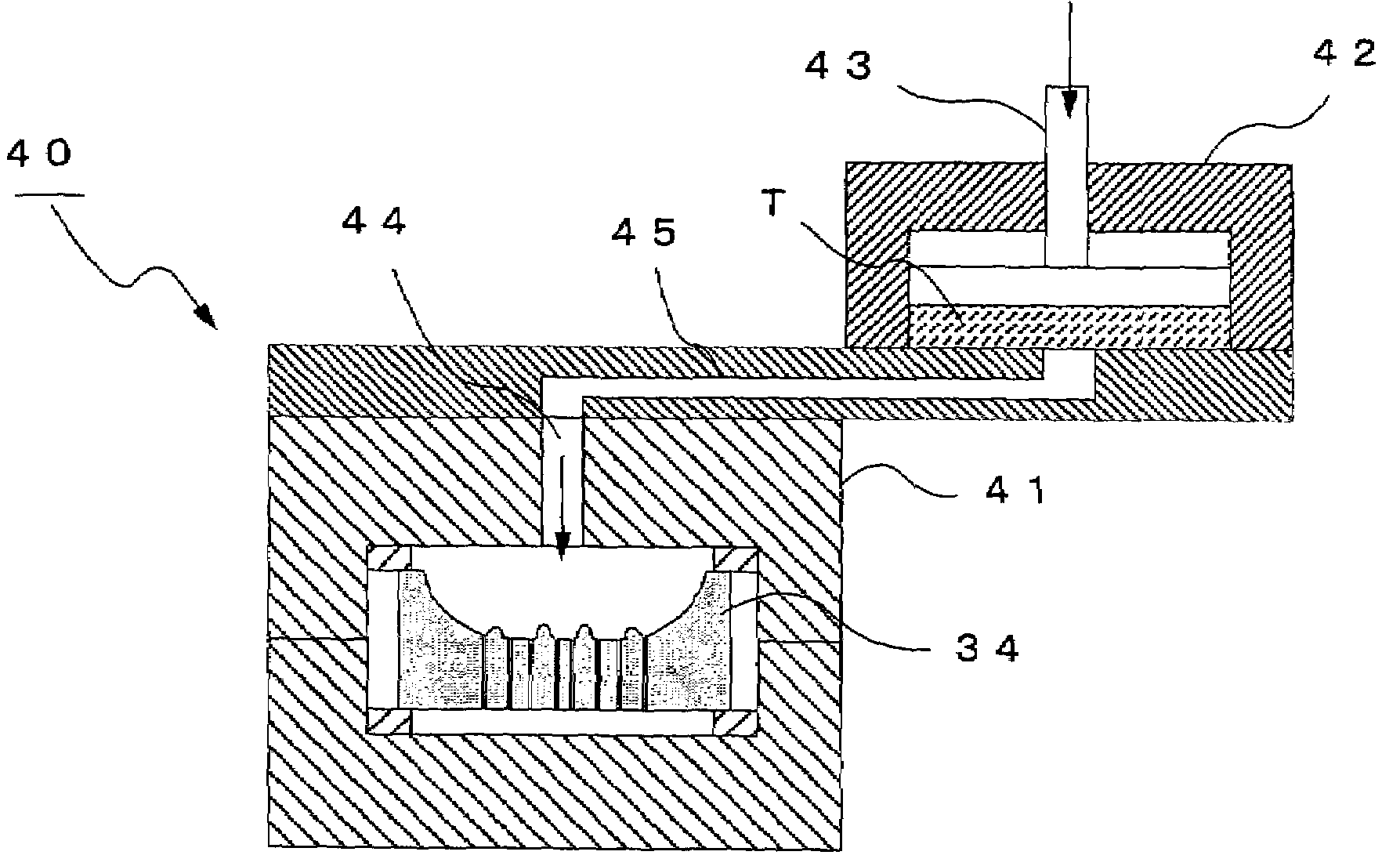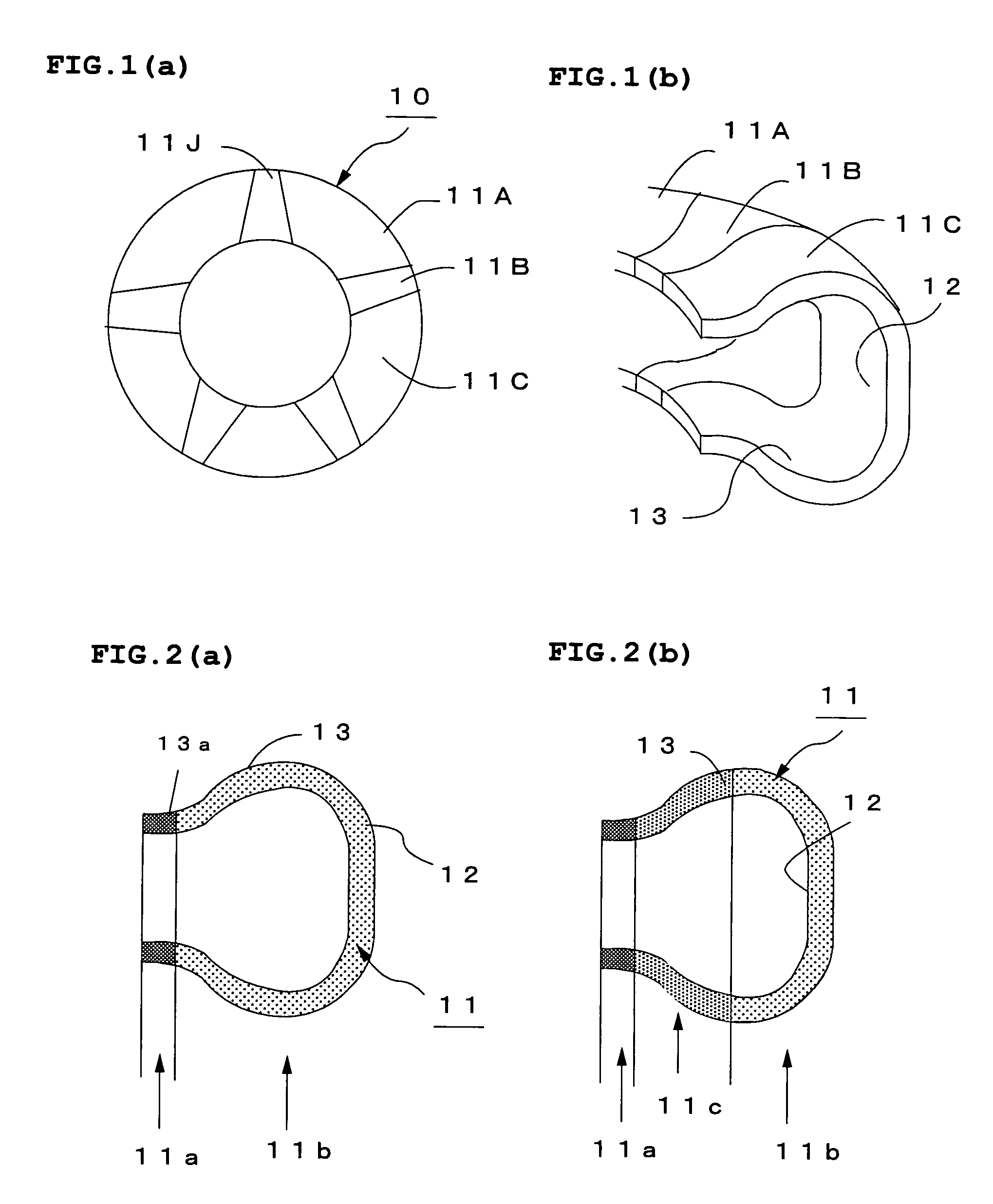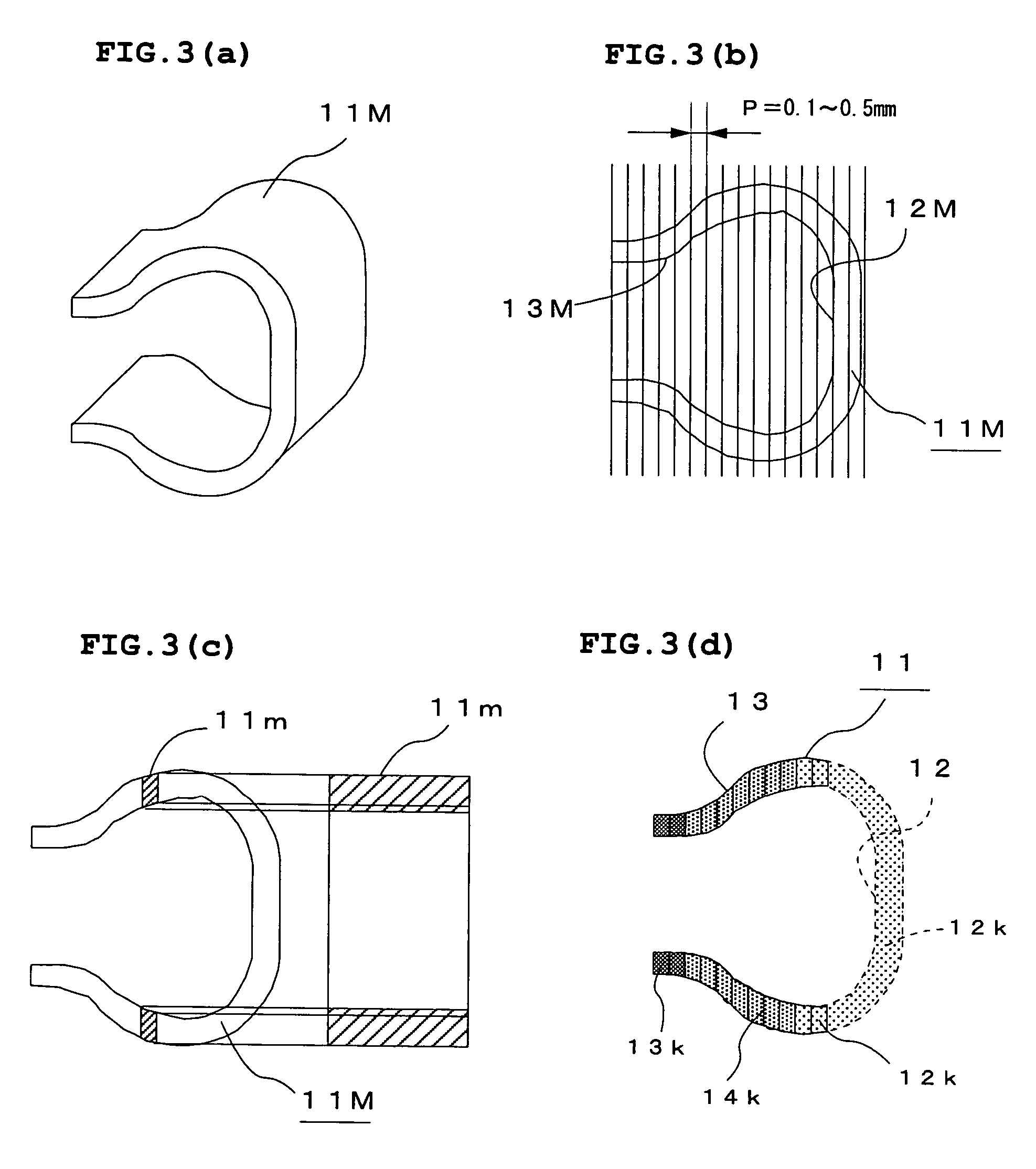Method for producing tire vulcanizing mold and tire vulcanizing mold
a technology of tire vulcanization and tire vulcanization, which is applied in the direction of additive manufacturing processes, transportation and packaging, and other domestic objects, can solve the problems of difficult to form holes or pores having a desired diameter, limited cutter strength and processing depth, and long processing time, so as to achieve the required strength and reduce the weight of the mold easily
- Summary
- Abstract
- Description
- Claims
- Application Information
AI Technical Summary
Benefits of technology
Problems solved by technology
Method used
Image
Examples
embodiment 1
[0062]FIGS. 1 (a) and 1 (b) show the constitution of a tire vulcanizing mold 10 according to this embodiment. This tire vulcanizing mold 10 is a split type mold consisting of a plurality of sector molds 11 (11A to 11J) which are interconnected in a loop. In this embodiment, a crown portion 12 having the sectional form of a tire crown portion and side portions 13 in contact with side tread portions are formed integrally on the tire side (inner side) of the above sector mold 11 by the above-described powder sintering method. Powders are sintered by changing heating and sintering conditions so that a portion including the crown portion 12 which does not require strength but has a complex structure is made a sparse portion 11b having a low density (therefore, having a lot of pores) of a sintered body and portions 13a corresponding to the mating portions of the mold of the side portions 13 (to be referred to as “mating portions” hereinafter), which require strength, are made dense portio...
embodiment 2
[0077]FIGS. 6(a) and 6(b) show the constitution of a tire vulcanizing mold 20 according to Embodiment 2. This mold 20 consists of a plurality of sector molds 25, each consisting of upper and lower molds 21 and 22 in contact with tire side portions and a plurality of vulcanizing mold pieces (to be referred to as “pieces” hereinafter) 24 fixed to a holder 23, arranged in a loop in the circumferential direction of a tire. A tread marking surface 24a (portion exposed to the inner wall of the mold 20) which is a recessed portion of each piece 24 is a tire forming surface, that is, a portion to be in close contact with green tire rubber to be vulcanized.
[0078]The tire forming surface 24a of each piece 24 has projections (to be referred to as “rib portions” hereinafter) 24R corresponding to a vertical groove pattern and projections (to be referred to as “lug portions” hereinafter) 24L corresponding to a horizontal groove pattern (lug pattern) of a tire tread as shown in FIG. 7. In this emb...
embodiment 3
[0086]FIGS. 8(a) and 8(b) show the constitution of a tire vulcanizing mold 30 according to this Embodiment 3. This mold 30 consists of a plurality of sector molds 35, each consisting of upper and lower molds 31 and 32 in contact with tire side portions and a plurality of pieces 34 fixed to a holder 33, arranged in a loop in the circumferential direction of a tire. The tread marking surface (portion exposed to the inner wall of the mold 30) 34a which is a recessed portion of each piece 34 is a tire forming surface, that is, a portion to be in close contact with green tire rubber to be vulcanized.
[0087]As show in FIG. 9, a plurality of slits 37 for discharging a gas generated at the time of vulcanizing a tire to the outside of the mold are formed in the above piece 34 in the vicinity of projections 36 formed on the above tread marking surface 34a, corresponding to the groove portions 36T of the tire tread portion 34T, and a blade 39 for forming a sipe 39T is formed in the groove porti...
PUM
| Property | Measurement | Unit |
|---|---|---|
| width | aaaaa | aaaaa |
| thickness | aaaaa | aaaaa |
| particle size | aaaaa | aaaaa |
Abstract
Description
Claims
Application Information
 Login to View More
Login to View More - R&D
- Intellectual Property
- Life Sciences
- Materials
- Tech Scout
- Unparalleled Data Quality
- Higher Quality Content
- 60% Fewer Hallucinations
Browse by: Latest US Patents, China's latest patents, Technical Efficacy Thesaurus, Application Domain, Technology Topic, Popular Technical Reports.
© 2025 PatSnap. All rights reserved.Legal|Privacy policy|Modern Slavery Act Transparency Statement|Sitemap|About US| Contact US: help@patsnap.com



